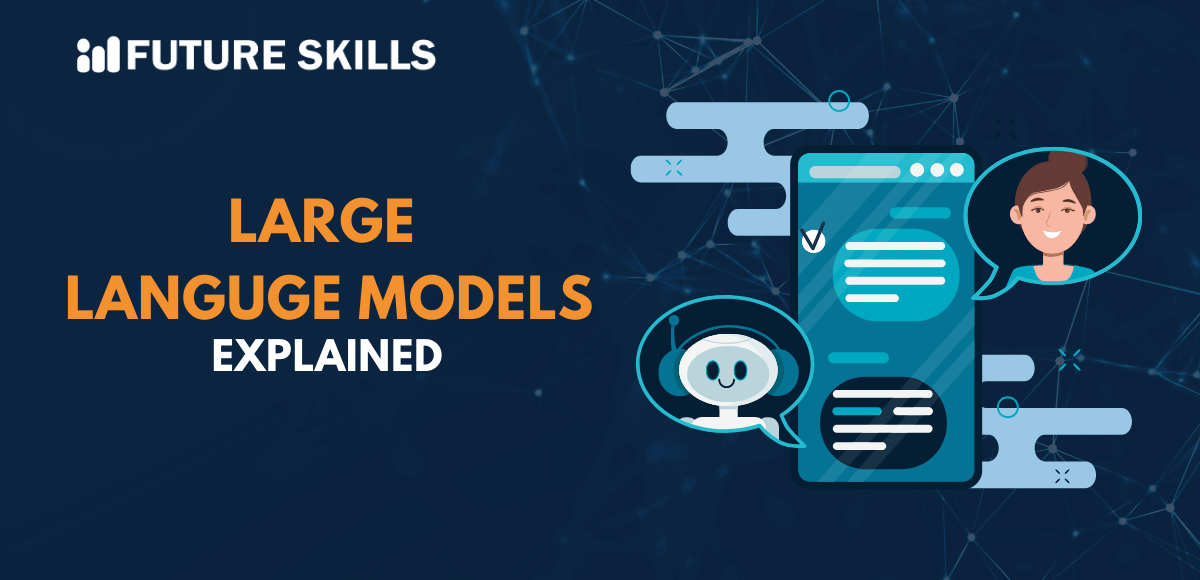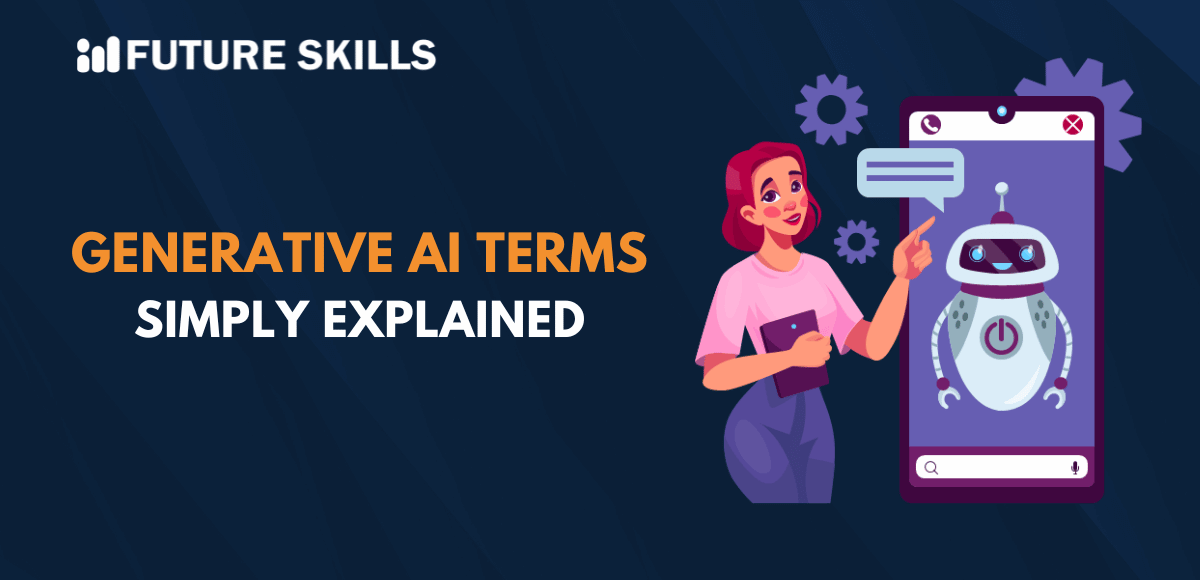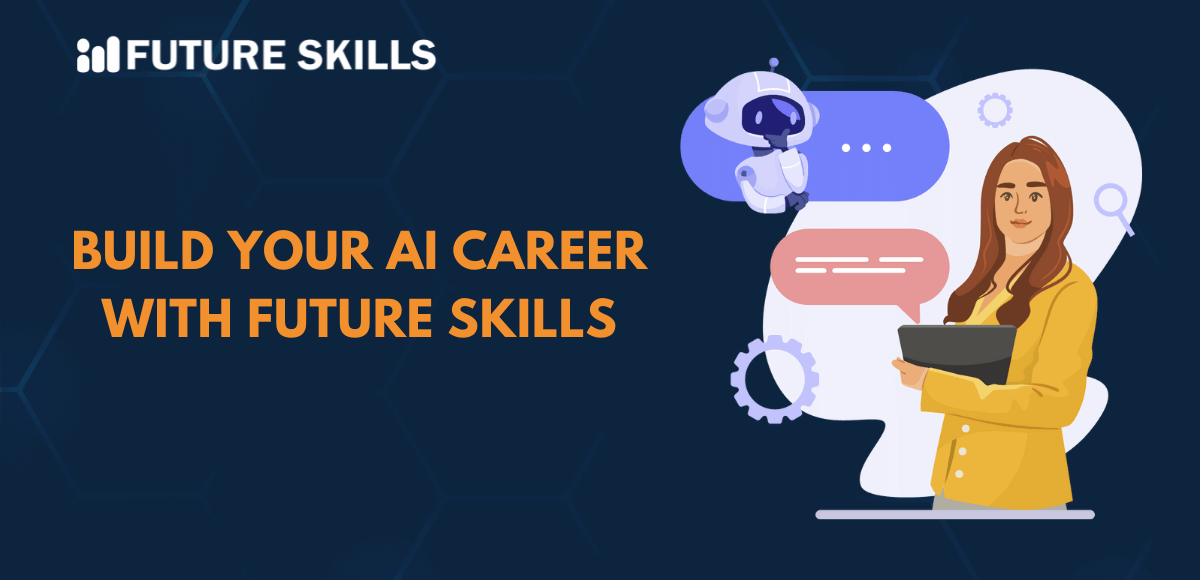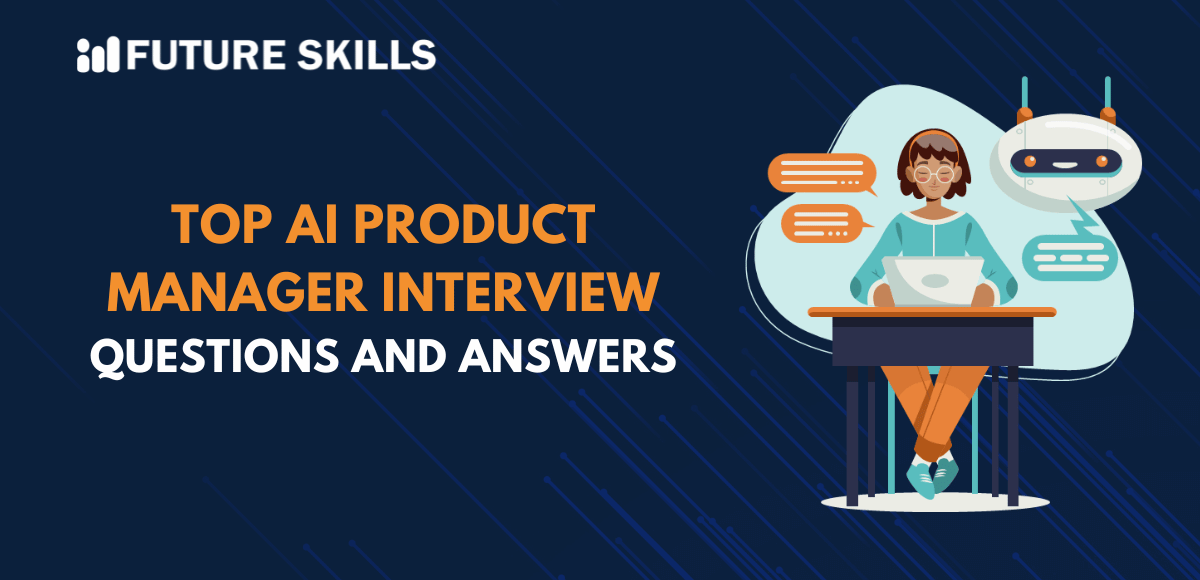Communication is one of the most prominent aspects that has defined the course of progress of human civilization. We have developed many spoken languages for communicating with each other. If you dig down deeper into all types of human and technological communication, you would find language as the core element in all of them. Languages offer words, grammar, and the semantics required to communicate your ideas and new concepts.
The large language model AI systems you will find in the domain of generative AI today have been serving the same purpose. Large Language Models or LLMs represent a major evolution in the concept of language models and enables the use of larger databases for training and generating responses. The earliest language model was developed in 1966 at MIT and since then, language models have evolved with new capabilities. Let us learn more about LLMs and how they work.
Enhance your AI skills and learn how to utilize the full power of AI with our Certified AI Professional (CAIP)™ course. Start your AI journey today!
Understanding the Fundamentals of Large Language Models
The foremost aspect in any guide on large language models explained for beginners would be the fact that LLMs are foundation models. LLMs have been trained with the help of large datasets that help them understand and generate responses in natural language alongside other types of content.
Large language models have played a pivotal role in introducing generative AI to the public and helping organizations adopt AI for different business processes and applications. LLMs represent a major shift from the conventional approach of creating language models for specific use cases.
The answers to queries like “What is Large Language Models?” also shed light on how LLMs showcase a major breakthrough in AI and natural language processing. You can find the most popular example of LLM in the form of GPT-3 and GPT-4 by OpenAI. Some of the other notable LLM examples include Llama models by Meta and BERT and PaLM models by Google. The meaning of LLM explained in simple words suggests that LLMs can understand natural language queries and respond like a human. LLMs have the capabilities to understand from context to come up with contextually relevant and coherent responses.
The models use billions of parameters for capturing intricate language patterns and performing different language-related tasks. Large language models have successfully revolutionized different applications such as content generation, chatbots, language translation and virtual assistants.
Do You Know Any Popular Examples of LLMs?
The curiosity about large language models generally leads people to examples of ChatGPT. It is definitely one of the most popular LLMs in the market that uses a transformer model. The other noticeable large language models examples include Claude, Language Model for Dialogue Applications or Lamda and BERT. Some of the other large language models which have not found widespread recognition include Cohere, Galactica and Falcon 40B. You can review the capabilities of different large language models to find how they follow a similar working mechanism.
The need to learn large language models LLM examples stems from the growing adoption of AI in businesses. LLMs help in enhancing efficiency, experience and effectiveness of the process of business evolution. It is also important to notice how LLMs solve different business issues thereby serving as valuable assets to address new problems. The evolution of LLMs has encouraged more businesses to invest in the technology and adapt to new trends.
Get a deep understanding of simple and advanced techniques of ChatGPT and make the most of it with our accredited ChatGPT Certification Course.
Insights into the Working Mechanism of Large Language Models
The best way to unravel the magic behind the operations of large language models is to learn about their working mechanism. The working of large language models explained in simple words would help in understanding how they can make machines respond to your queries like humans. LLMs work by using deep learning techniques along with a massive volume of textual data. The models leverage a transformer architecture such as generative pre-trained transformer architecture that can ensure management of sequential data such as text input.
LLMs include multiple neural network layers in which you can find different parameters that you can fine-tune in the training process. Subsequently, the LLM improves the parameters with another layer, the attention mechanism. The attention mechanism helps in optimization of specific portions of data sets.
The answers for “What is Large Language Models?” also focus on how the models can learn prediction of the next word in sentences according to the context offered by preceding words. LLMs can achieve impeccable prediction capabilities with the help of a probability score for recurring words.
Large language models achieve accuracy by training the model on a massive text-based training dataset. The massive training dataset helps the model in learning grammar, conceptual relationships, and semantics with the help of zero-shot and supervised learning.
As a matter of fact, you can find different types of large language models with variations in their training approach. After training with the large datasets, LLMs become capable of autonomous text generation by predicting the next word according to the input. The features of LLMs help in harnessing them for a wide collection of natural language understanding and content generation applications.
What are the Most Notable Use Cases of LLMs?
The large language model AI revolution has shown us how language can serve as the best instrument for simplifying interactions between human and AI systems. Large language models have been successful in redefining different types of business processes alongside proving their versatility in different use cases. LLMs serve as the core elements of conversational AI in virtual assistants and chatbots for enhancing human-AI interactions.
LLMs are also capable of content generation as they can help with automation of content creation for marketing materials and blogs and articles. You can use LLMs as the ideal tools for extracting information from massive datasets and summarizing them to facilitate faster knowledge discovery. Furthermore, LLMs are also the best tools for language translation and code generation tasks. Here is a glimpse of the notable areas in which large language models can help businesses with different enhancements.
-
Text Generation
The large language models LLM use cases in business primarily revolve around text generation capabilities. LLMs offer language generation abilities that help businesses in writing emails and blog posts in response to natural language prompts. One of the most notable examples of recent developments in this area is Retrieval-Augmented Generation or RAG models.
-
AI Chatbots
AI chatbots or virtual assistants are the next important use case of LLMs for businesses. Chatbots can respond to queries by customers and perform backend tasks or provide in-depth information in natural language.
-
Sentiment Analysis
One of the emerging use cases of LLMs refers to sentiment analysis, which can prove useful in the domain of marketing. LLMs can analyze text for determining the tone of a customer for better understanding of customer feedback. Sentiment analysis applications of LLMs help in supporting brand reputation management with the assurance of accurate analysis.
-
Content Translation and Summarization
The list of large language models examples also shed light on their uses in content summarization. You can use LLMs for summarization of long articles, research reports and news stories along with technical documentation. The capabilities of LLMs also offer broader coverage for different types of language translation tasks.
Discovering New Advantages with Large Language Models
Large Language Models bring a wide range of new benefits for organizations and their users. Some of the most prominent advantages of LLMs include flexibility, accuracy, performance and efficiency. First of all, the benefits of LLM explained to beginners would focus on how you can customize LLMs to extend their capabilities.
As a result, you can adapt LLMs to the specific needs of an organization. LLMs offer flexibility as you can use one model for different tasks across various businesses and users. You can also train LLMs on unlabeled data with a faster training process. Most important of all, large language models can facilitate automation of routine tasks thereby saving time.
Unraveling the Limitations of Large Language Models
Apart from the advantages of LLMs, you must also understand the limitations of large language models. You are likely to come across different setbacks in different types of large language models such as bias and ethical concerns. LLMs impose a massive burden of development costs as you would need large datasets and expensive GPU hardware. Another formidable limitation of LLMs is the fact that they can lead to AI hallucination. LLM users must also pay attention to the unreasonably high operational costs required after training and development of the language models.
Final Words
The conventional perspective on large language models explained how they can respond to natural language queries. You would have to know that there are different types of LLMs according to the training approach they follow. As you dive deeper into the domain of LLMs, you would discover how subtle modifications lead to major enhancements.
The widespread applications of LLMs in the business landscape open new prospects for expanding their adoption. Large Language Models are still in their initial days and have come up with new and innovative advancements. Explore the diverse functionalities of LLMs by experimenting with them and learning more about them with practical training resources now.
Our AI Certification Course can be your one-way ticket to new heights of success in your career. Enroll and become an AI expert by learning from industry-leading experts.






